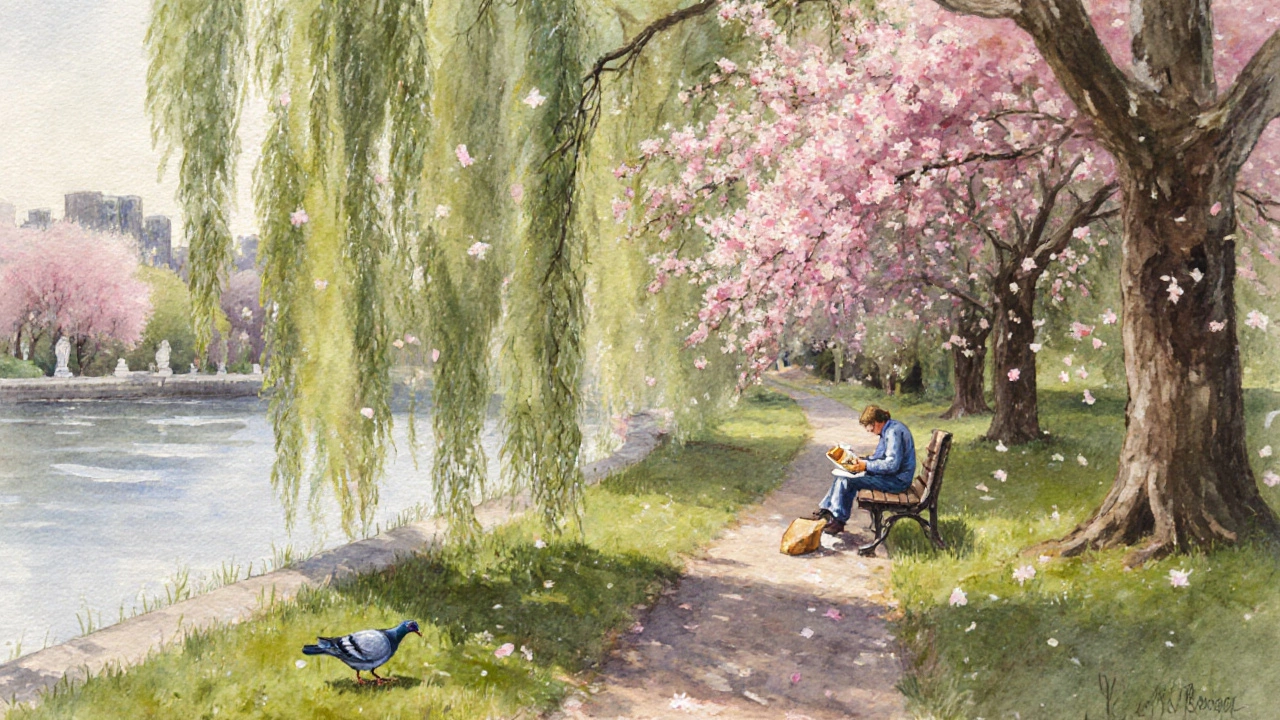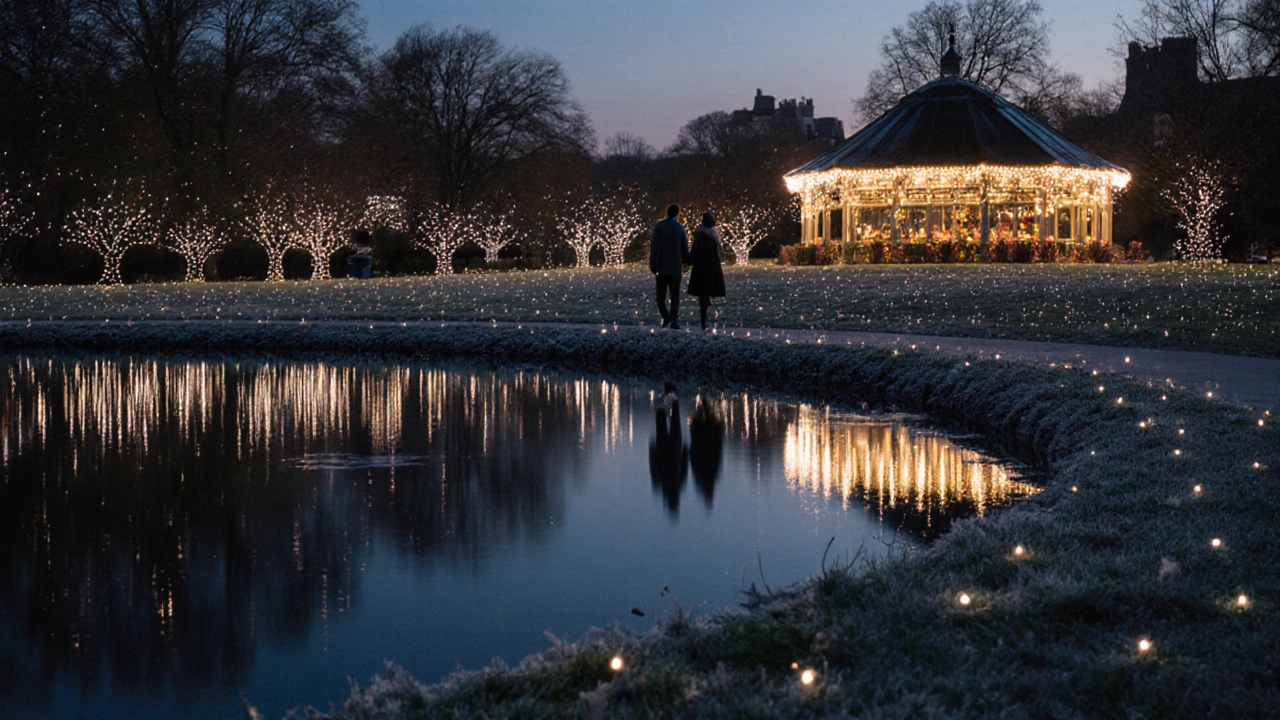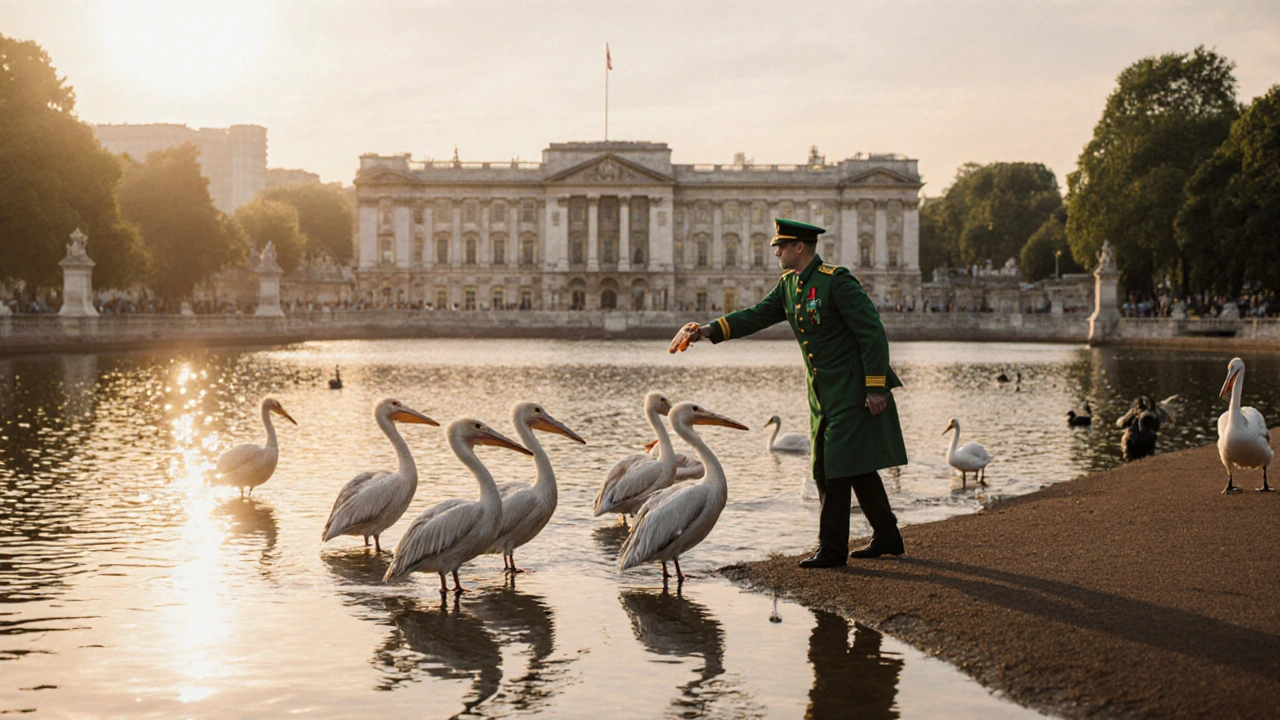St James’s Park isn’t just another green space in London. It’s the oldest royal park in the city, and it’s alive in ways most people never notice. Walk through its gates, and you’ll see pelicans gliding across a calm lake, ducks trailing behind tourists tossing bread, and locals sitting under ancient oaks with coffee in hand. This isn’t a place you visit for a quick photo. It’s a living, breathing part of London’s heartbeat - and it’s been that way since 1532.
How St James’s Park Got Its Name (and Its Pelicans)
The park got its name from a medieval leper hospital dedicated to Saint James the Less. That’s right - a hospital for people with leprosy once stood where you now see families feeding ducks. King Henry VIII turned the grounds into a hunting ground in the 1500s, and by the 1660s, King Charles II had transformed it into a formal French-style garden. But the real magic? The pelicans.
They’ve been here since 1664, when a Russian ambassador gifted three to Charles II. No one knows why he chose pelicans, but the tradition stuck. Today, there are seven pelicans living in the park, and they’re fed by staff every day at 2:30 p.m. You can watch them waddle out of their enclosure, flap their wings, and dive into the water for fish. It’s not a show. It’s just part of their routine. Locals come at the same time every day, like clockwork. Kids stand with their snacks ready. Tourists pull out their phones. And the pelicans? They know exactly when it’s feeding time.
The Lake: More Than Just a Pretty View
The lake isn’t just decorative. It’s a wildlife hotspot. Over 50 species of birds call it home - from mute swans to coots, from little grebes to kingfishers. In winter, the lake freezes over just enough for ducks to stand on the ice, fluffing their feathers like they’re posing for a postcard. In summer, the water shimmers under the sun, reflecting the white columns of Buckingham Palace across the way.
There’s no swimming allowed - this isn’t a public pool. But you can rent a pedal boat for £10 an hour. It’s not the fastest ride, but it’s the best way to see the park from the water. You’ll glide past the pelicans’ island, spot a heron standing still as a statue, and maybe even catch a glimpse of a kingfisher zipping past like a blue flash. The boat dock is right by the bridge near the Horse Guards Parade entrance.
Walking Routes That Feel Like Secrets
Most people stick to the main path from the palace to the Horse Guards. But the real charm lies off the beaten track. Take the narrow trail that runs along the western edge of the lake - it’s lined with weeping willows and rarely crowded. In spring, the cherry trees bloom in soft pink, and the scent of hyacinths fills the air. This is where couples sit quietly, where artists sketch, and where pigeons have learned to steal sandwiches from unattended bags.
Another hidden path leads from the park’s southeast corner to Birdcage Walk. It’s a quiet lane with tall fences and old brick walls. You’ll pass a small plaque marking where a former royal stable once stood. Walk a little further, and you’ll find the park’s oldest tree - a 300-year-old chestnut with a hollow trunk big enough for two people to stand inside. Locals call it the Whispering Tree. No one knows why, but people always pause there. Some leave small notes tucked into the bark.

What to See and Do - Beyond the Pelicans
There’s more to St James’s Park than waterfowl. The park has five distinct zones, each with its own vibe.
- The Mall Side: Where the flower beds are changed seasonally. In spring, you’ll see tulips in bold reds and yellows. In autumn, chrysanthemums glow like fire.
- The Queen’s Bird Sanctuary: A fenced-off area where rare birds are protected. Look for the red-crested pochard - it’s not native, but it’s been here since the 1980s.
- The Rose Garden: Small but stunning. Over 1,200 roses bloom here from June to September. No entry fee. Just walk in.
- The Pavilion: A glass-and-steel café built in 2017. It’s modern, airy, and serves proper coffee. Not the kind you get from a cart. This is where you sit with a book and watch the swans drift by.
- The Bandstand: Free concerts on summer Sundays. You’ll hear everything from jazz to classical. Bring a blanket. People arrive early to claim spots.
And if you’re visiting in December, don’t miss the Christmas lights. The park is decorated with thousands of tiny white bulbs that turn on at 4 p.m. every day. The lake reflects them like a mirror. It’s quiet, peaceful, and nothing like the chaos of Oxford Street.
When to Go - Avoid the Crowds
St James’s Park is open every day from 5 a.m. to midnight. But the best times? Early morning and late afternoon.
Arrive before 8 a.m. on a weekday, and you’ll have the lake almost to yourself. You’ll see the pelicans waking up, the swans stretching their wings, and the park keeper checking the fences. No queues. No selfie sticks. Just birds and quiet.
On weekends, come after 5 p.m. The lunchtime rush is over. Families have gone home. The tourists have moved on to Westminster Abbey. And the park returns to being a place for Londoners - not just visitors.

What You Need to Know Before You Go
- Entry is free. No tickets. No passes. Just walk in.
- Feeding the pelicans? Only use the fish provided by staff. Bread is bad for them. It causes health problems. You’ll see signs everywhere - but people still do it. Don’t be one of them.
- Restrooms? There are two: one near the Pavilion and one by the Horse Guards entrance. Both are clean and open daily from 7 a.m. to 8 p.m.
- Wheelchair access? Yes. All paths are paved and flat. Ramps lead to the lake and the Pavilion.
- Parking? None in the park. The nearest paid parking is on Birdcage Walk - but it’s expensive and hard to find. Take the Tube. St James’s Park station is right outside the park’s south gate.
Why This Park Matters More Than You Think
St James’s Park isn’t just a pretty spot. It’s a symbol. It’s where kings once hunted deer, where queens walked in silence, and where soldiers marched to war. It’s where people have come to grieve, to celebrate, to propose, and to simply breathe.
In a city that never stops moving, this park holds still. It doesn’t need to be loud. It doesn’t need to be famous. It just needs to be here - with its pelicans, its lake, its trees, and its quiet corners where time slows down.
Visit once, and you’ll understand why Londoners keep coming back. Not because it’s the biggest park. Not because it’s the most colorful. But because it feels like home.
Can I feed the pelicans at St James’s Park?
You can feed them, but only with the fish provided by park staff during the daily feeding at 2:30 p.m. Feeding them bread, crackers, or other human food is harmful and can cause serious health issues. Signs are posted around the lake, and staff will gently remind you if you try. The pelicans are protected wildlife - not pets.
Is St James’s Park open all year?
Yes. The park is open daily from 5 a.m. to midnight, every day of the year, including holidays. The lake, paths, and gardens remain accessible in all seasons. Winter brings fewer crowds and frost-covered grass, while summer offers longer daylight and live music at the bandstand.
Are there toilets in St James’s Park?
Yes, there are two public restrooms: one near the Pavilion café and another by the Horse Guards entrance. Both are cleaned regularly and open from 7 a.m. to 8 p.m. There are no toilets near the pelican enclosure, so plan ahead if you’re heading to the lake.
Can I bring my dog to St James’s Park?
Yes, dogs are welcome, but they must be kept on a lead at all times. There are no off-leash areas in the park. This is to protect the birds, especially during nesting season (March to August). Dog owners are asked to clean up after their pets - bins are available near all entrances.
What’s the best way to get to St James’s Park?
The easiest way is by Tube. St James’s Park station (District and Circle lines) opens directly onto the park’s south gate. Victoria station is a 10-minute walk to the west, and Westminster station is 8 minutes to the east. Buses 11, 24, 53, and 87 stop nearby. Driving is not recommended - parking is scarce and expensive.
Next Steps - What to Do After Your Visit
After walking through St James’s Park, you might want to keep going. The park connects directly to Green Park to the west and Buckingham Palace to the south. Walk through the palace gates, and you’ll see the Changing of the Guard - a daily ritual that draws crowds but is worth seeing once.
Or head east along The Mall toward Trafalgar Square. You’ll pass the National Gallery and the Churchill War Rooms. If you’re hungry, try the café at the Pavilion for a proper sandwich and tea, or walk five minutes to the historic Jermyn Street for a traditional English pub.
St James’s Park isn’t an endpoint. It’s a starting point - for deeper exploration, quiet reflection, or just a moment of calm in the middle of one of the world’s busiest cities.
